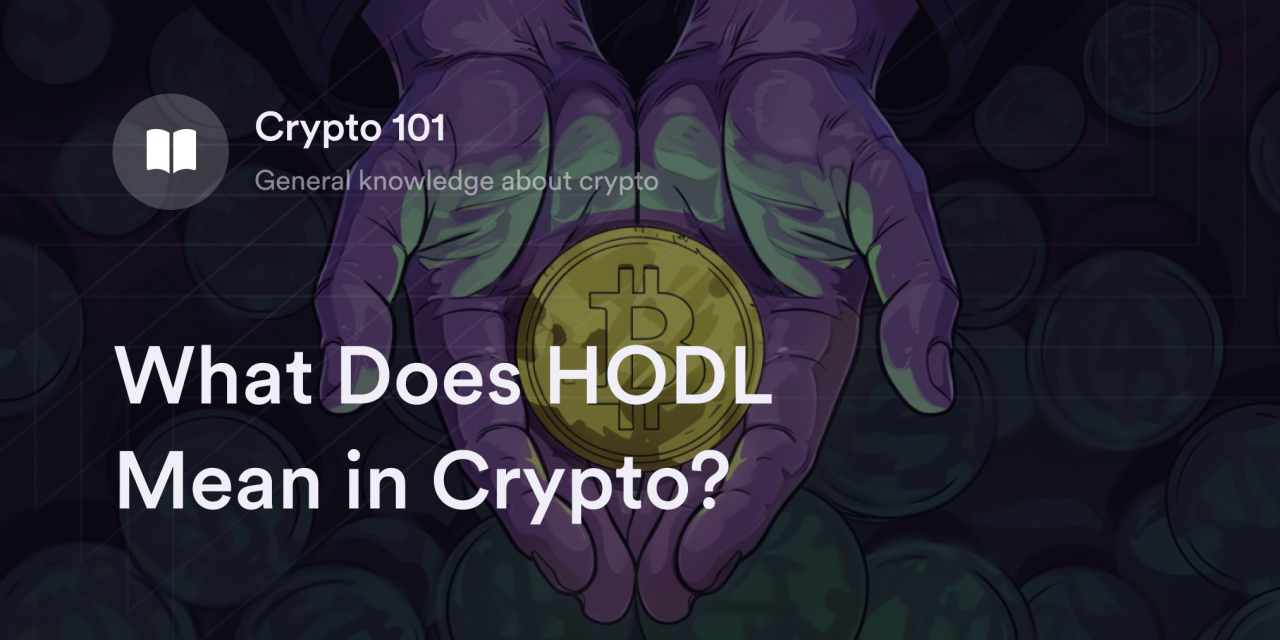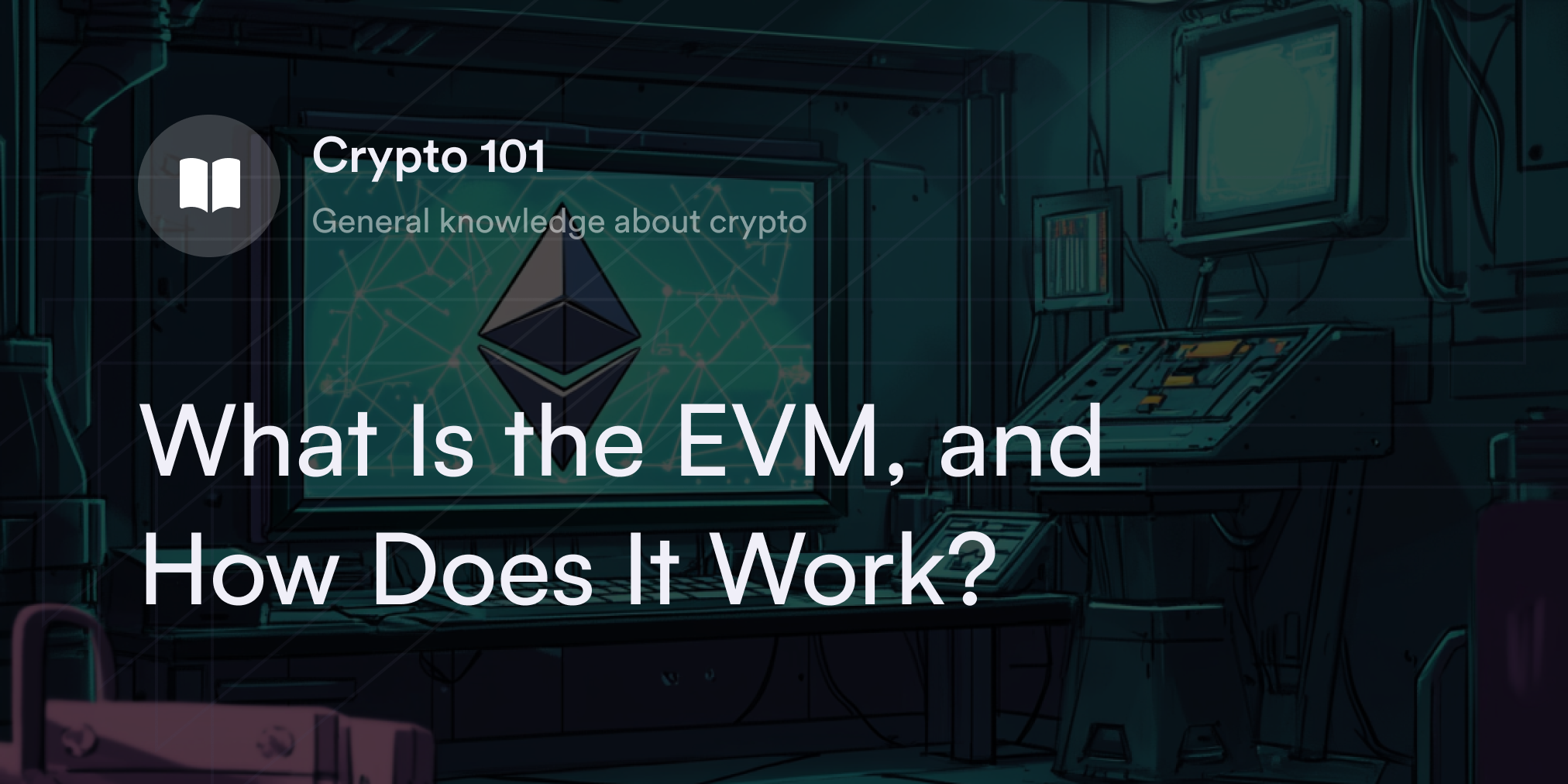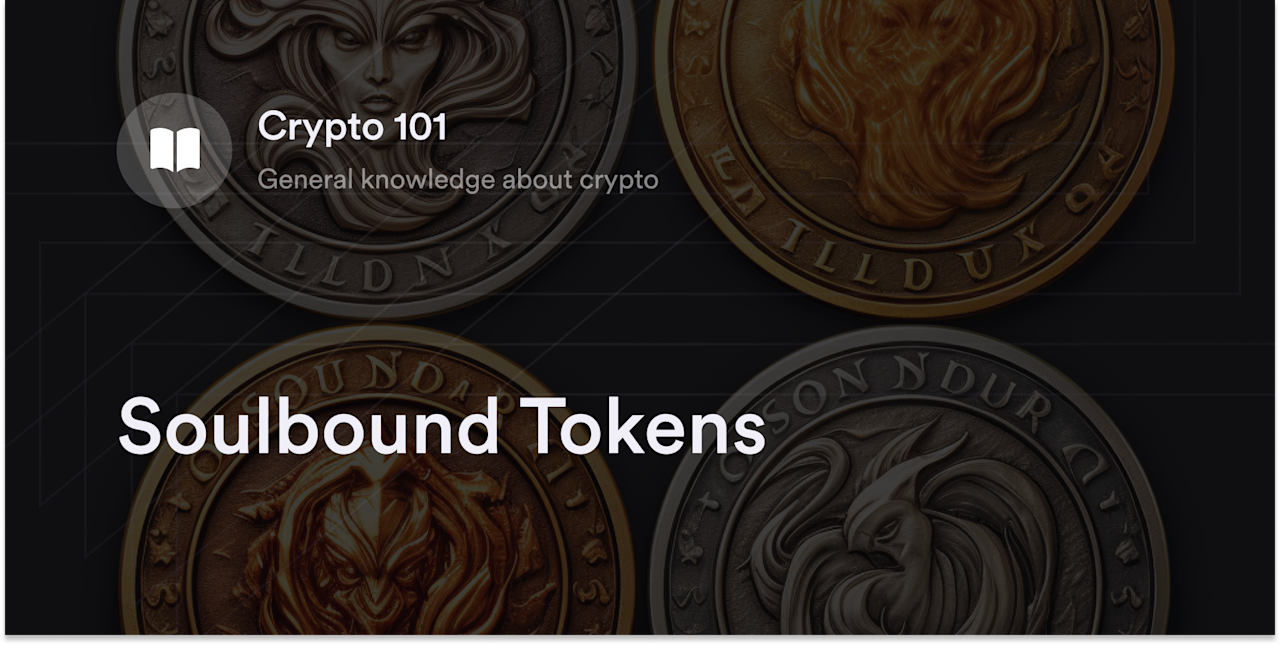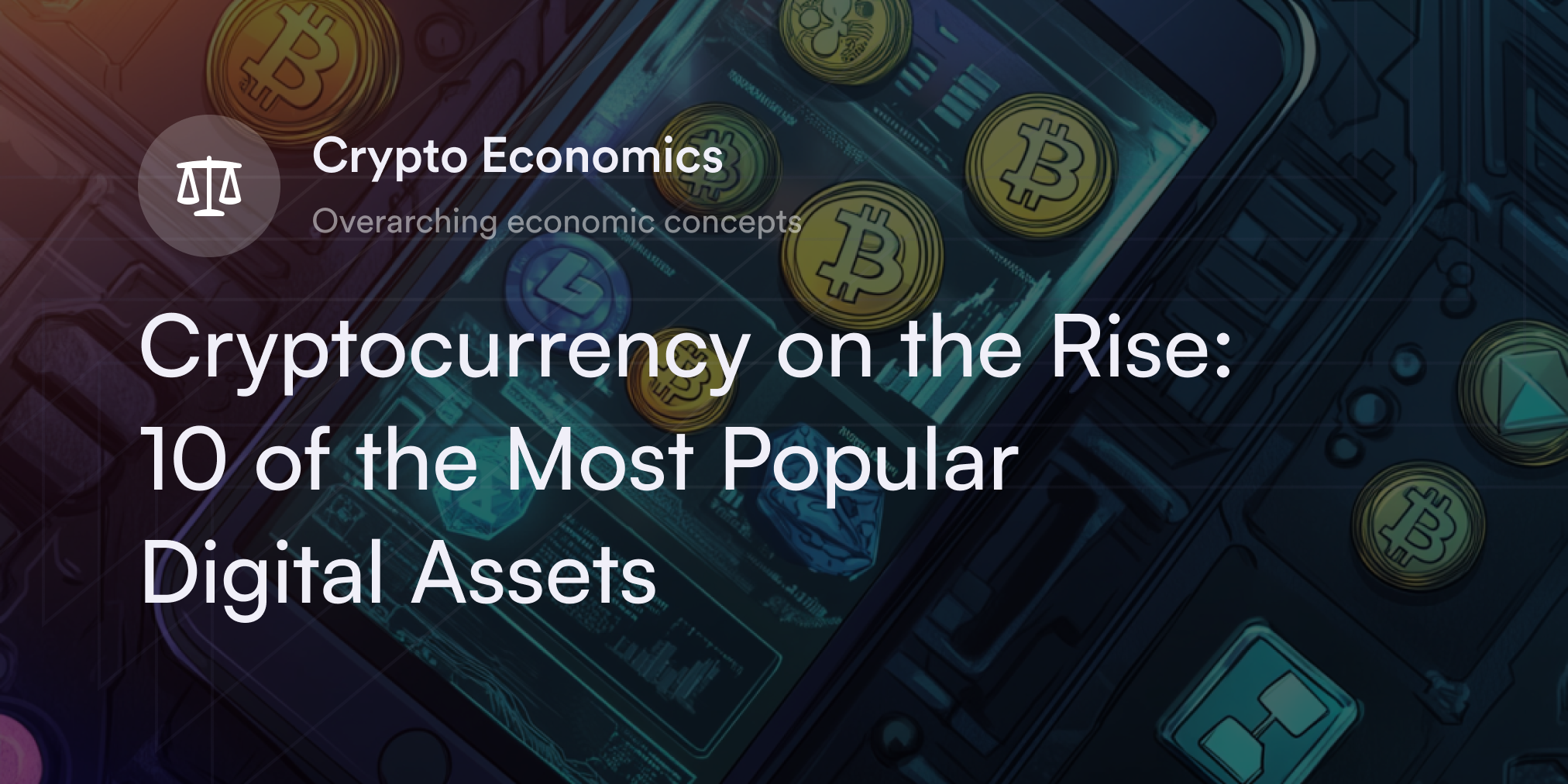


The cryptocurrency community loves to create slang. “FUD,” “to the moon,” “DYOR”—there are so many industry-specific colloquialisms that newbies to the market could benefit from a crypto-specific dictionary.
Of all the jargon, “HODL” is perhaps the most recognizable. There are HODL memes, HODL forums, and even HODL T-shirts, but the term is more than a punchline. In fact, it’s synonymous with a popular—and powerful—passive investment approach.
Whether you’re new to crypto or a seasoned investor, it’s important to make informed decisions about strategy—and that means knowing your options. Anyone interested in crypto's future should understand what HODL means. Learn where the term came from and why it's a useful approach for amateur traders.
What does ‘HODL’ mean in crypto?
"HODL" began as a typo. The crypto slang term was originally a misspelling of the word "hold" in a 2013 forum post, but it evolved into an acronym for the phrase "Hold on for dear life," referring to a buy-and-hold crypto investment strategy. “HODLers” buy assets and keep them with the expectation that years down the road, they’ll be worth significantly more than they are today.
Although traders associate HODL with cryptocurrencies, long-term investments are nothing new in traditional markets. Any investor who holds positions in stocks, precious metals, or ETFs for multiple years could be considered a HODLer.
Where did HODL come from?
When Bitcoin’s price slumped in late 2013, user "GameKyuubi" wrote a post called "I AM HODLING" on the crypto forum Bitcointalk. In this thread, GameKyuubi advocated for amateur investors to hold their Bitcoin (BTC) positions as the coin’s value declined rather than day trading or panic selling.
The boldness of GameKyuubi's post struck a chord with other Bitcoin investors. Shortly after "I AM HODLING" went live, crypto fans began sharing it on social media. Soon, HODL memes flooded the online community—but beneath the humor was an on-point investment strategy. Other long-term BTC holders who resisted sell-offs started describing themselves as "HODLers," and HODL culture was born.
Nowadays, HODL culture extends well beyond Bitcoin: There are HODLers for just about every digital coin. For instance, people who HODL Chainlink's LINK tokens call themselves "marines," while those who believe in Shiba Inu (SHIB) are in the "SHIB Army." Even crypto companies, projects, and publications acknowledge the power of the HODL meme and use it to appeal to customers.
HODL helps connect people in the Web3 ecosystem and encourages the crypto community to focus on the positive aspects of blockchain technology. The HODL memes bring levity to stressful situations, and the phrase inspires fellow investors to stay strong when markets decline. All in all, the shared struggles and triumphs of HODLing create a sense of camaraderie among crypto traders.
What is a “HODLing” investment strategy?
HODLing means buying cryptocurrency and holding on to it long-term. It doesn't matter which cryptocurrency is in your portfolio, as long as you hold it for a few years (or more) before selling.
To HODL means to believe a coin’s value will ultimately increase over time, regardless of day-to-day price swings. Look at Bitcoin: On December 13, 2013, when GameKyuubi wrote their infamous post, BTC closed at $522.70 USD. In 2022, the coin spent the entire year over $20,000. HODLers from 2013 could turn an incredible profit selling BTC today.
The cornerstone of HODL's appeal is its simplicity—novice investors can understand how to HODL within a few minutes. While big-league investors have the knowledge and resources to capitalize on small price changes and volatility, amateurs are unlikely to predict trends and act on them in time to profit (or minimize losses). When HODLing, buyers research and purchase assets they’re confident in, then hold on to them. As far as investment strategies go, that’s pretty straightforward.
While some HODLers store their virtual currencies on centralized crypto exchanges (platforms for buying and selling cryptocurrency), many prefer to move their assets to self-custodial hardware wallets. A self-custodial wallet is strictly managed by the wallet holder, meaning there’s no centralized intermediary between the trader and their crypto. Keeping assets in a “cold” hardware wallet, like a USB drive, prevents hacking and theft— and unlike a centralized exchange, it’s completely offline. Although hardware wallets are less convenient to use, HODLers are hanging on to their assets for years, so they only have to worry about keeping the device safe until it’s time to sell.
Pros and cons of HODLing
As with any investment strategy, there are benefits and drawbacks to the HODL technique.
HODLing is simple to understand, but it requires a lot of patience, discipline, and conviction. Suppose a buyer isn’t fully convinced about the future of their coins. In that case, it’s challenging to HODL through market downturns—particularly because cryptocurrencies are among the most volatile and speculative asset classes. People who HODL crypto must believe their preferred coins will gain widespread adoption (or at least have a net increase in value) while remaining calm amidst significant price swings.
Despite the uncertainty, HODLing can be a powerful investment technique for those with an optimistic view of the future of crypto. It takes the guesswork out of timing the crypto markets—so while HODLers may not buy at the absolute "best prices" for their coins, they have the advantage of a long-term time horizon. If the strategy works out in their favor, their assets should be worth more in a few years, regardless of the initial price they paid. Plus, HODLers can add to their positions during bear markets (when prices are falling) because they believe in the future success of the assets.
Overall, HODL best suits investors with a multi-year vision for their preferred crypto projects. If you have a positive outlook on blockchain technology and aren't afraid of market volatility, HODLing crypto may be worth considering. However, those more interested in taking an active approach to portfolio management should focus on daily trading over HODL.
FAQs about the HODL strategy
Cryptocurrency is a volatile investment. Because it’s a relatively new and rapidly growing market, prices are constantly shifting. To protect your investments, it’s essential to know the ins and outs of your strategy of choice before making a purchase.
Still have questions about HODLing? Here are the answers to common questions:
1. How long should you HODL crypto?
There's no specific time frame required to be a HODLer. However, most HODLers keep their crypto for a minimum of a few years before selling. People who believe cryptocurrencies like Bitcoin will become mainstream currencies may never sell their portfolios, opting to keep their assets until they can spend them like fiat currency.
2. Do you need to HODL crypto on a cold storage wallet?
Because HODLing requires a long-term commitment, many investors use cold storage devices, such as hardware wallets, for security. Cold wallets keep a user's private keys offline so their assets are not easily hacked or stolen. By contrast, software wallets (“hot wallets”) are always online. Even high-quality hot wallets are generally more vulnerable to hacks than cold wallets.
However, it’s not necessary to use a cold wallet to HODL. Investors who are concerned about losing a hardware wallet or can’t afford a high-quality cold wallet can choose to keep their assets on a centralized exchange, if they are comfortable with counterparty risk.
3. Is it okay to stake crypto while HODLing?
Dozens of high-profile blockchains now use a Proof-of-Stake (PoS) consensus mechanism to validate transactions. On these chains, anyone can lock ("stake") their coins to earn a percentage-rate reward over time for their help securing the network. Staking on blockchains like Ethereum, Solana, or Polygon earns passive income with minimal effort.
However, staking is only worthwhile if you believe your crypto will, at minimum, maintain its value. There's little sense in earning a 10% annual percentage yield if a coin’s price plummets by 25%.
There are also potential security risks with staking. In addition to hacks and glitches, you could lose your crypto if a blockchain's validator misbehaves (an occurrence known as "slashing").
If you're interested in staking while you HODL, read through your cryptocurrency's rules before depositing your funds. Be sure you know how long it takes to withdraw your digital assets and research the track record for each validator pool. While staking crypto could increase your gains over time, it's riskier than holding coins in a hardware wallet.
4. Is dollar-cost averaging the same as HODL?
It’s easy to confuse dollar-cost averaging (DCA) with HODLing. After all, there's a lot of crossover between these investment strategies. However, not every HODLer practices DCA.
Investors who use DCA regularly buy small amounts of their preferred crypto assets over a long period. Some people purchase crypto at regular intervals (e.g., weekly), while others buy coins whenever they fall by a preset percentage (e.g., every 10% drop in a 24-hour window). In either case, the goal of DCA is to lower an investor's average cost per coin.
Long-term HODLers may use DCA strategies to add to their position, especially during bear markets. However, DCA doesn't define the HODL method.
Dive deeper into crypto trading with dYdX
For many crypto investors, HODLing is a way of life. If you're curious about making HODL a part of your portfolio, we can help you get started. dYdX’s exchange offers dozens of advanced trading features for crypto traders, including fee-free perpetuals. To learn more about digital assets and trading strategies, check out our academy.
Disclaimer
The content of this article (the “Article”) is provided for general informational purposes only. Reference to any specific strategy, technique, product, service, or entity does not constitute an endorsement or recommendation by dYdX Trading Inc., or any affiliate, agent, or representative thereof (“dYdX”). Use of strategies, techniques, products or services referenced in this Article may involve material risks, including the risk of financial losses arising from the volatility, operational loss, or nonconsensual liquidation of digital assets. The content of this Article does not constitute, and should not be considered, construed, or relied upon as, financial advice, legal advice, tax advice, investment advice, or advice of any other nature; and the content of this Article is not an offer, solicitation or call to action to make any investment, or purchase any crypto asset, of any kind. dYdX makes no representation, assurance or guarantee as to the accuracy, completeness, timeliness, suitability, or validity of any information in this Article or any third-party website that may be linked to it. You are solely responsible for conducting independent research, performing due diligence, and/or seeking advice from a professional advisor prior to taking any financial, tax, legal, or investment action.
You may only use the dYdX Services in compliance with the dYdX Terms of Use available here, including the geographic restrictions therein.
Any applicable sponsorship in connection with this Article will be disclosed, and any reference to a sponsor in this Article is for disclosure purposes, or informational in nature, and in any event is not a call to action to make an investment, acquire a service or product, or purchase crypto assets. This Article does not offer the purchase or sale of any financial instruments or related services.
By accessing this Article and taking any action in connection with the information contained in this Article, you agree that dYdX is not responsible, directly or indirectly, for any errors, omissions, or delays related to this Article, or any damage, injury, or loss incurred in connection with use of or reliance on the content of this Article, including any specific strategy, technique, product, service, or entity that may be referenced in the Article.







